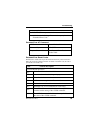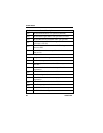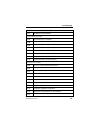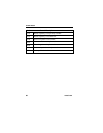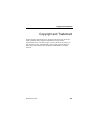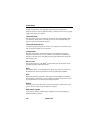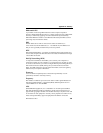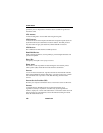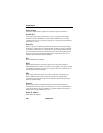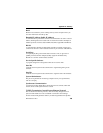
Appendix A: Glossary
RFM-4000-5015 Rev1
103
Appendix A: Glossary
This glossary contains terms and definitions used within this guide. It is by no
means exhaustive of terms that you may come across.
ASCII
American Standard Code for Information Interchange. A standard set of 128
characters, symbols and control codes used for computer communications.
ASCII characters require 7 bits of data to send, but are often sent 8 bits at a
time with the extra bit being a zero.
Asynchronous Communication
A method of sending data in which the bits can be sent at random times. Data
transmission is not synchronized to a clock. With asynchronous transmission,
each character is transmitted one at a time with a “start” bit at the beginning
and one or more “stop” bits at the end. Any amount of time can elapse before
the next character can be sent.
AT Command
An order entered into the computer to request your modem to perform certain
actions, such as dial a telemodem number. AT commands are Hayes-
compatible modem commands.
Baud
The signaling rate of a line, which is the number of transitions (voltage or
frequency changes) that are made per second.
Baud Rate
Signaling speed of the modem. Common baud rates are 2400, 4800, 9600,
19200, and 56k.
Byte
A data unit of eight bits.
Circuit Switched Data
A networking technology that provides a temporary, but dedicated, connection
between two stations no matter how many switching devices the data is routed



